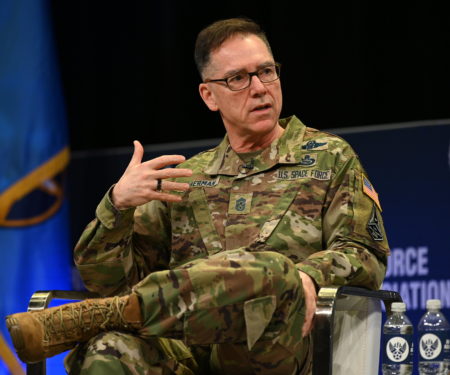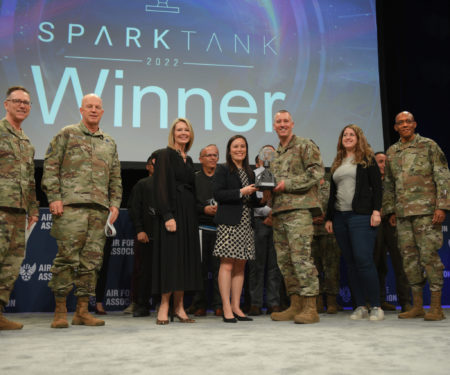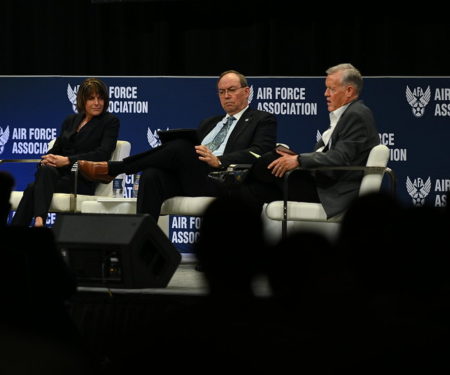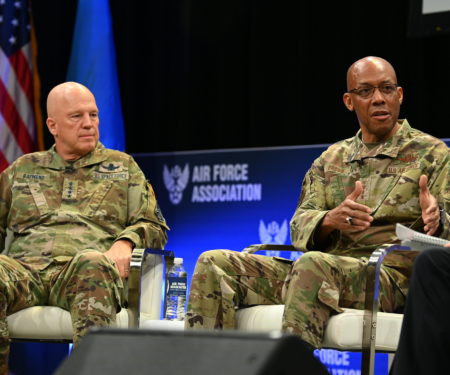Radar Sweep
Around-the-Clock NATO Air Patrols Fly to Keep Russia at Bay
NATO has nearly doubled the number of military jets on alert across Europe amid concerns that Russia’s reckless flying in international airspace could escalate alongside its war in Ukraine. The alliance’s move to constantly guard its eastern edge highlights how rapidly the security situation has evolved in and out of Ukraine over the past 10 days, as well as the stakes of NATO’s biggest test since its founding in 1949.
New Air Force One Delivery Could be 17 Months Behind Schedule
The 17-month delay projection has not been accepted by the Air Force and could change as the military negotiates with Boeing on a new schedule. The original delivery timeframe of December 2024 had already been sliding. "We continue to work closely with the Air Force on a new approved schedule baseline," a Boeing spokesperson told CBS News.
PODCAST—Hypersonic Strike: Have China and Russia Won the Race?
Host John “Slick” Baum, engages with two leading experts, Mark Lewis and Dick Hallion, to learn more about hypersonic technology and the steps needed to operationalize it. The ability to fly at five at times the speed of sound is a game changer. However, flying this fast on an everyday basis is incredibly demanding from a technical perspective. The reason you’ve heard a lot about hypersonics lately is that we’re in a race with China and Russia to develop operational capabilities in this realm and we’re not at the head of the pack. Leaders are worried because if you think developing hypersonic technologies is tough, defending against them is even harder. The irony is that for decades, the U.S. was the leader in hypersonics, thanks to its work with aircraft like the X-15. Since then, we’ve pursued a few test programs, but it really hasn’t been a priority for defense leaders. That’s all changed now that we find ourselves falling behind our adversaries. It’s caused a massive reset in the Department of Defense, with numerous surge efforts launched to help America regain its hypersonic edge.
Space Command Looking to Ground, Ship-based Missile Defense Radars to Improve Monitoring
U.S. Space Command is working to improve its capability keep tabs on what is happening in space—including looking to ground- and ship-based missile defense platforms as additional sources of much needed data, SPACECOM head Gen. Jim Dickinson said today. “My number one priority within the command is: how do I increase my battlespace awareness, in particular, how do I look at the space domain?” he told the Air Force Association’s annual conference in Orlando.
COMMENTARY: Send in the Quadcopters: Arm Ukrainian Citizens with Simple Drones
“In a recent Facebook post, the Ukrainian Ministry of Defense called upon citizens in Kyiv to help monitor the city for Russian soldiers—and particularly people with drones. “Do you have a drone? Then give it to an experienced pilot! Or do you know how to fly a drone? Join the joint patrol with Unit 112 of the Kyiv City Special Brigade!” It’s a great idea with tactical and strategic implications—and the United States and allied countries should help by sending simple commercial drones and spare parts to Ukraine. It wouldn’t cost much either: cheap off-the-shelf drones available on Amazon can be less than $100 (though higher-end drones can easily run a few thousand dollars each),” writes Zak Kallenborn, the master coordination director for Project Exodus Relief.
Space Force to Reorganize its Acquisition Command to ‘Focus on the Threat’
The U.S. Space Systems Command — the Space Force organization that oversees procurement of new technology — is being restructured in an effort to re-energize the bureaucracy and bring fresh focus on the competition with China, officials said March 4. Space Force leaders unveiled details of the reorganization at the Air Force Association’s Air Warfare Symposium.
F-16C Jet Suffers in-flight Emergency, Lands Safely at Aviano
A U.S. Air Force pilot safely landed their F-16C Fighting Falcon jet in Italy after suffering an in-flight emergency on Wednesday afternoon, prompting buildings near the runway to lock down.
Defense Trade Association Chief Resigns After Leadership Split
The National Defense Industrial Association’s chief executive is stepping down, citing a disagreement about the direction and leadership of the association. In an interview with Defense News, Carlisle pointed to disagreements with NDIA Chairman Arnold Punaro and Vice Chairman Michael Bayer. “We just could not get on the same sheet of music, across the governance and in the direction of NDIA,” Carlisle said, adding that he handed in his resignation in December.
Watch the Most Realistic Movie Portrayal of Modern Aerial Combat Ever Made
Through rigorous attention to technical detail and thorough authenticity, this minor scene from an anime movie gave viewers the most accurate portrayal of modern aerial combat ever seen.




